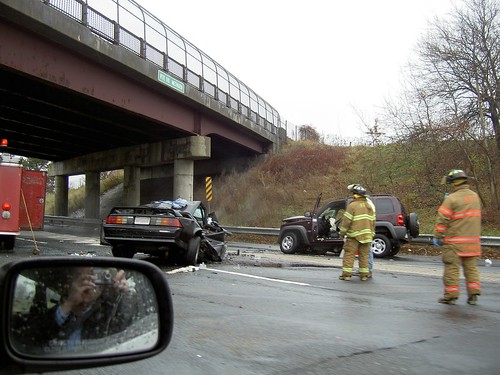(Source: Associated Press via Yahoo! News)

WASHINGTON – U.S. highway deaths in 2008 fell to their lowest level in nearly 50 years, the latest government figures show, as the recession and $4 per gallon gas meant people drove less to save more. Safety experts said record-high seat-belt use, tighter enforcement of drunken driving laws and the work of advocacy groups that encourage safer driving habits contributed to the reduction in deaths.
Preliminary figures released by the government Monday show that 37,313 people died in motor vehicle traffic crashes last year. That’s 9.1 percent lower than the year before, when 41,059 died, and the fewest since 1961, when there were 36,285 deaths.
A different measure, also offering good news, was the fatality rate, the number of deaths per 100 million vehicle miles traveled. It was 1.28 in 2008, the lowest on record. A year earlier it was 1.36.
“The silver lining in a bad economy is that people drive less, and so the number of deaths go down,” said Adrian Lund, president of the Insurance Institute for Highway Safety. “Not only do they drive less but the kinds of driving they do tend to be less risky — there’s less discretionary driving.”
Fatalities fell by more than 14 percent in New England, and by 10 percent or more in many states along the Atlantic seaboard, parts of the Upper Midwest and the West Coast, according to the National Highway Traffic Safety Administration.
“Americans should really be pleased that everyone has stepped up here in order to make driving safer and that people are paying attention to that,” Transportation Secretary Ray LaHood said.
Click
here to read the entire AP article.








